- Home
- Prelims
- Mains
- Current Affairs
- Study Materials
- Test Series
Jan 14, 2022
SCIENTISTS HAIL HAR GOBIND KHORANA ON 100TH ANNIVERSARY
Recently, the 100th birth anniversary of Dr. Har Gobind Khorana was celebrated.
 Dr. Har Gobind Khorana (1922-2011):
Dr. Har Gobind Khorana (1922-2011):
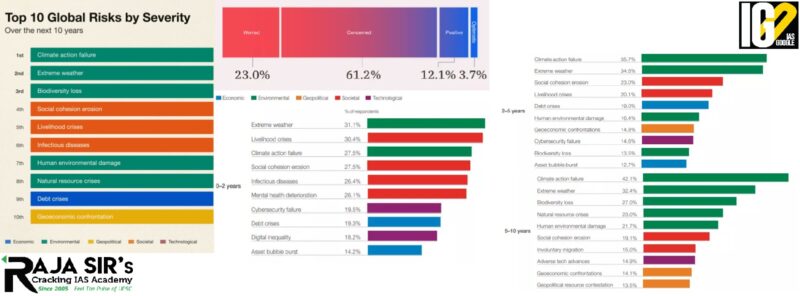 Global Risks Perception Survey (GRPS):
Global Risks Perception Survey (GRPS):

 Target Rating Point (TRP)
Target Rating Point (TRP)
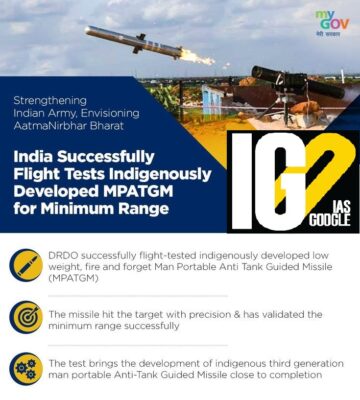

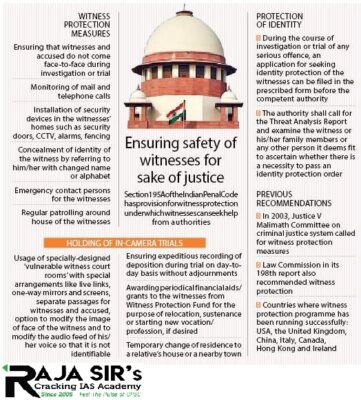 New definition
New definition
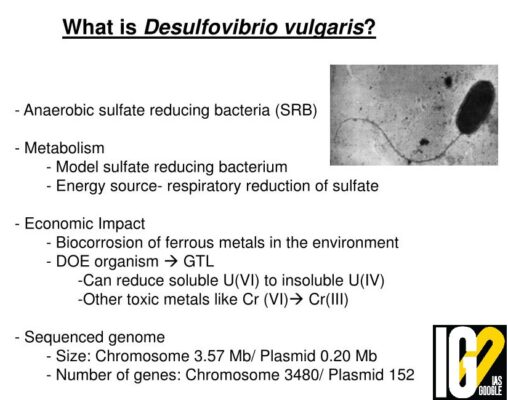
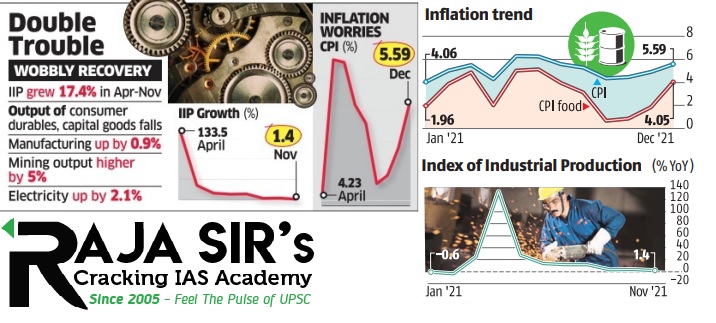
 Jallikattu:
Jallikattu:
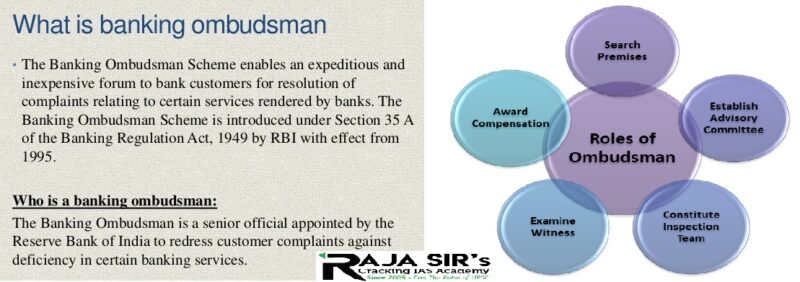 Highlights:
Highlights:
 Dr. Har Gobind Khorana (1922-2011):
Dr. Har Gobind Khorana (1922-2011):
- He was an Indian biologist, born in undivided India (Lahore), and settled as a citizen of the USA.
- He is known as the Father of Genetic Engineering for his key role in deciphering the Genetic Code.
- For his contribution, he received the Nobel prize in Physiology in 1968 for their interpretation of the genetic code and its function in protein synthesis.
- He was the first scientist to chemically synthesize
- Oligonucleotides are artificially created DNA and RNA molecules.
- He investigated mutations in rhodopsin (a light-sensitive protein found in the retina of the eyes) that are associated with retinitis pigmentosa, which causes night blindness.
- Genetic code is the pattern in which the four bases of DNA or RNA (A, C, G, and T) are joined or structured together.
- All living organisms on earth have the same genetic codes or components of DNA. However, the sequence of those components (nucleotides) in the DNA is different for all species.
- It is aimed to encourage Indian and American post-graduate students to take up research as a career.
- The government of India provides scholarships to Indian students under this program.
- The Ministry of science and technology of India along with Wisconsin- Madison University (USA) and the Indo-US Science and Technology Forum (IUSSTF) runs this program.
- Bhungloti is a creeper that in combination with the pith of the roots of a jackfruit tree yielded a saffron dye.
- This is used for making the robes of Buddhist Bhikkus (monks) in Assam.
- A bhikku is an ordained male in Buddhist monasticism.
- Male and female (bhikkhuni) monastics are members of the Sangha (Buddhist community).
- A person under the age of 20 cannot be ordained as a bhikkhu.
- He can be ordained as a sramaṇera or sramaṇeri
- The term bhikku comes from a verbal root meaning “to beg.”
- The bhikku’s head and face are kept shaven.
- He wears three garments—an upper and lower robe and a stole—originally made of cast-off rags dyed with saffron.
 Global Risks Perception Survey (GRPS):
Global Risks Perception Survey (GRPS):
- GRPS is the World Economic Forum’s source of original risks data.
- It has 37 risks out of which 2 were added in 2021-22 report.
- 2 new added risks: i) Geo-economic confrontations” and ii) Pollution harms to human health.
- Climate-change related risks account for three of the top risks by severity in the next 10 years with the highest potential to severely damage societies, economies and the planet.
- The global risks horizon changes over the next two to 10 years, as the cascading impacts of the COVID-19 pandemic are felt.
- Societal risks make up a third of the global top 10, with societal cohesion erosion and livelihood crises completing the top five.
- Infectious diseases come lower down at number six.
- By 2024, developing economies (except China) will have fallen 5.5% below their pre-pandemic expected GDP growth, while advanced economies will have surpassed it by 0.9%.
- Such global divergence will impact on the world's ability to tackle common challenges like climate change, digital safety, restoring livelihoods and societal cohesion and managing competition in space.
- Widening disparities within and between countries will make it difficult to control COVID-19 and its variants.
- Erosion of social cohesion, deterioration of mental health, infectious diseases and livelihood crises will be equal to environmental threats in the next two years.
- In the next five years, economic risks of debt crises and geoeconomics confrontations emerge as governments struggle to balance fiscal priorities.
- Environmental risks dominate the world for both the short and long term in the next 10 years.
- WEF is an international organization that brings together its membership of political and business leaders each year to discuss major issues that impact the global economy.
- Founded in: 1971
- Headquarters: Geneva, Switzerland
- The environment and related issues like biodiversity destruction and human-made disasters are the most pressing global concerns in WEF's list.
- It has no independent decision-making power but seeks to influence powerful people to make decisions that benefit the global community.
- The organization is funded through its own membership, which includes prominent business and political figures.

- Xenotransplantation involves the transplantation of nonhuman tissues or organs into human recipients.
- It involves the transplantation, implantation or infusion of either:
- live cells, tissues, or organs from a nonhuman animal source,
- human body fluids, cells, tissues or organs that have had ex vivo contact with live nonhuman animal cells, tissues or organs.
- The development of xenotransplantation is driven by the fact that the demand for human organs for clinical transplantation, is exceeding the supply.
 Target Rating Point (TRP)
Target Rating Point (TRP)
- It is the metric used by the marketing and advertising agencies to evaluate this viewership.
- It is the tool to judge which programmes are watched the most and to index the viewers' choices.
- It shows how many times people are watching a channel or a particular programme.
- TRP is calculated by Indian agency the Broadcast Audience Research Council using BAR-O-meters.
- The BARC releases weekly TRP results every Thursday ranking all TV channels and TV programmes.
- It surveys in over 45,000impanelled households.
- In this way, some thousand viewers are surveyed in the form of justice and sampling.
- BAR-O-meters is installed in some places or set in selected homes to calculate the TRP.
- Through this meter the information of TV channel or programme for one minute is carried out by the Indian Television Audience measurement (INTAM) monitoring team. This method is called the People meters.
- BARC currently has 22,000 Bar-o-meters installed across the country and is mandated to scale that up by 10,000 annually to reach 50,000 metered homes by year four of operations.
- Here the people meter records a small portion of the picture that is being watched on the TV.
- This data is collected from a set of homes in the form of pictures and later on is analysed to calculate the TRPs.
- Formed in 2014, it is the world’s largest television audience measurement service.
- It is the only rating body for the broadcasting sector in India.
- Petta thullal is also known as Petta Kettu.
- It is the ritualistic sacred dance marking the last leg of the annual Sabarimala pilgrimage season.
- It is held annually at Erumely in the district of Kottayam, Kerala.
- It is performed during the Makaravilakku period (November, December and January) among thousands of devotees.
- It depicts the joyfulness of people over the slaying of Mahishi by Lord Ayyappa.
- Two groups participate in the thullal, one from Ambalappuzha and other from Aalangadu.
- The Ambalappuzh: They start the ritualistic dance after sighting the kitein the skies around noon.
- Aalangadu: The ceremonial dance by the Alangad team begins in the afternoon after sighting the starin the daylight sky.
- To bring citizens and government closer through digital platforms.
- Transform citizen services through use of digital technologies like UPI, DigiLocker, UMANG, e Sign.
- Fast track the implementation of the national level public digital platforms in key social sectors such as Health, Education, Agriculture, etc.
- Make India the global hub for emerging technology through creation of large pool of skilled resources on futuristic technologies.
- Foster a spirit of research and development and process reengineering in ongoing government services.
- Foster responsible use of emerging technology such as Artificial Intelligence, Machine Learning, Blockchain, 5G, Augmented Reality, Virtual Reality, etc for Social Empowerment.
- Ensure resilient Government Infrastructure with robust technological solutions to withstand pandemic like disruptions.
- Use technology for propagating end to end service delivery without human interference to the citizen at the grass root level.
- While providing exclusive space for transmen and transwomen in correctional facilities, prison officials will ensure that they are not completely isolated from others.
- If the court warrant does not mention the self-identified gender or if the gender is disputed by the person, the Jail Superintendent should, with the help of the legal services authorities, assist the person in making an application for a change in gender identity.
- Self-identity of transgender persons is respected at all times in prison - during jail admission process, medical examination, search, lodging, clothing and treatment or care inside prisons.
- States to ensure that transgender inmates should be searched by person of their preferred gender or by a trained medical professional.
- The search procedure should be confined to compliance with security protocols and restriction of contraband and should not be aimed at determining the gender of the person.
- There should be adequate preservation of right to privacy and dignity in regard to separate toilets for transmen and transwomen as well as shower facilities.
- Transgender inmates should have equal right to healthcare, without any discrimination on grounds of their gender identity.
- Ensure specific health needs of transgender persons with regard to their mental health and gender affirmative processes, over and above the scope of rehabilitation, aftercare, welfare of prisoners.
- It also called for training of prison medical officers in the standards of care for transgender persons and their right to decide their self-identified gender.
- upheld the right of all persons to self-identify their gender.
- declared that hijras and eunuchs can legally identify as “third gender”.
- held that transgender persons were entitled to fundamental rights under Articles 14, 15, 16, 19(1)(a) and 21 of the Constitution.
- referred to core international human rights treaties and the Yogyakarta Principles to recognise transgender persons’ human rights.
- Yogyakarta Principles is a document about human rights in the areas of sexual orientation and gender identity.
- It was published as the outcome of an international meeting of human rights groups in Yogyakarta, Indonesia, in November 2006.
- The SC struck down the sec 377 on homosexuality that made carnal intercourse against order of nature a criminal offence.
- The court overruled its previous judgement given in Suresh Kaushal case and declared Sec 377 as unconstitutional as it violated Art 14,15,19 and 21 of the Constitution.
- As per the Prison act, 1894 the bodily searches are mandatory and rules are laid down in the model prison manual (MPM).
- MPM does not say anything about sexual minorities.
- This could become a weapon of exploitation because the physical search will be based on their apparent sex characteristics.
- Prisoners are required to be separated by Section 27 of the Prisons Act as well as the MPM.
- MPM categorizes women, adolescents and high-security prisoners as in need of special treatment to protect them from any kind of abuse.
- However, no mention of trans prisoners is made.
- Keeping trans prisoners with the general population of prisoners exposes them to targeted sexual abuse by their fellow inmates.
- Act states that their health must be examined on the general or specific orders of the medical officers. But the Act fails to account for trans prisoners.
- Current law does not prescribe for maintaining separate records for transgender person.
- Trans person should be recruited as a member of “jail authorities”.
- Jails should have an oversight facility that is dedicated to ensuring the safety and security of sexual minorities and their preventive monitoring.
- Implement the guidelines issued in NALSA judgement.
- The Prisons Act and the MPM need to recognise the right to self-determination.

- It is an Indian third-generation anti-tank guided missile derived from Nag ATGM.
- It is fitted with high-explosive anti-tank (HEAT) warhead.
- The missile has a range of 2.5 km.
- It is a low weight fire and forget missile

- It is group of more than 70 countries encouraging the adoption of the global goal to protect 30x30.
- Aim: protecting at least 30 percent of world’s land and ocean by 2030 to halt the accelerating loss of species, and protect vital ecosystems.
 New definition
New definition
- Earlier the vulnerable witnesses were limited to only child witnesses.
- Now vulnerable witnesses will also include:
- Witnesses related to the age-neutral victims of sexual assault
- Witnesses related gender-neutral victims of sexual assault
- Witnesses suffering from mental illness as defined in Mental Healthcare Act 2017
- Witnesses with threat perception and any speech or hearing-impaired individual
- Witness suffering from any other disability, considered as vulnerable by concerned court.
- All High Courts (HCs) must adopt and notify a Vulnerable Witness Deposition Centre (VWDC) Scheme. (One VWDC in each district).
- Implementation (mechanism as prescribed by SC):
- Concerned HC will give an estimate to SC about the additional requirement of manpower for the implementation of the VWDC scheme.
- SC has also made the Justice Gita Mittal committee for designing and implementing an All-India VWDC training program.
- Union Ministry of Women and Child Development will designate a nodal officer for coordinating the implementation.
- 14th Law Commission Report (1958), Malimath Committee on Criminal justice system (2003), 4th National Police Commission Report (1980) had recommended witness protection law.
- SC recommended it in the case of the State of Gujarat vs. Anirudh Singh (1997).
- The legislature failed to make law on Witness Protection. So, the SC launched a Witness Protection Scheme (WPS) in 2018.
- WPS provides for the safety and security of witnesses and his family, protection of identity, relocation, police patrolling, and all other necessary arrangements required for the protection of the Witness.
- It is implemented by the Union Home Ministry.
- A witness can apply to the competent authority in the district for protection under WPS.
- Competent authority:
- It is the standing committee in each district headed by District and session judge.
- Other members of the committee are the Head of the police in the district and the Head of the prosecution in the district (member secretary).
- The competent authority will analyze threat perceptions and provide for arrangements accordingly. These arrangements are limited to 3 months. Later, a renewal is required by the same process.
- WPS provides for categorization of the witnesses under 3 categories, namely witness A, witness B, witness C. This categorization is done on the basis of threat perception.
- Establishment of State Witness Protection Fund (SWPF)at state/UT level for implementation of this scheme.
- SWPF will receive money through budgetary allocations, fines imposed by courts, Corporate Social responsibility (CSR) etc.
- Competent authority:

- It is commonly found in aquatic environments, soil, and animal intestine.
- It is a sulfur-reducing bacteria.
- So, it can be used as bio-cleaning agent, to clean monuments facing stains due to acidic rains, which had sulfur (SO2).

- The low base effect and higher food inflation pushed up the headline retail inflation, with core inflation to near 6 %.
- Low base effect: It is the tendency of a small change from a low initial amount to be resulted into a large percentage change.
- Headline retail inflation: It refers to the change in value of all goods in the basket.
- Food inflation climbed to a six-month high of 05 %.
- The rise was mainly due to milk (3.8 % and cereals inflation (2.6 per cent) which rose to a 12-month and a 14-month high.
- Consumer Price Indices (CPI) measure changes over time in general level of prices of goods and services that households acquire for the purpose of consumption.
- For construction of CPI numbers, two requisite components are consumption patterns and price data collected at regular intervals.
- It is published by Central Statistical Office and released on 12th of every month.
- CPI numbers are widely used as a macroeconomic indicator of inflation as a tool by governments and central banks for inflation targeting and for monitoring price stability and as deflators in the national accounts.
- It is also used for indexing dearness allowance to employees for increase in prices.
- It is therefore considered as one of the most important economic indicators.
- CPI for Industrial Workers (IW)
- CPI for Agricultural Labourers (AL)
- CPI for Rural Labourers (RL)
- CPI for Urban Non-Manual Employees (UNME)
- It is a measure of change in retail prices of food items consumed by the population.
- Under the CFPI, the index gives food price level changes for rural, urban and all India basis.
- The base year used in CFPI is 2012 as in the case of CPI.
- It is the change in the costs of goods and services but does not include those from the food and energy sectors.
- This measure of inflation excludes these items because their prices are much more volatile.
- A dynamic consumption basket is considered the basis to obtain core inflation.
- Core inflation is calculated using the Consumer Price Index (CPI) by excluding such commodities.
- If temporary price shocks are taken into account, they may affect the estimated overall inflation numbers in such a way that they are different from actual inflation. To eliminate this possibility, core inflation is calculated to gauge the actual inflation apart from temporary shocks and volatility
 Jallikattu:
Jallikattu:
- It is a popular traditional bull-taming sport in Tamil Nadu, during Pongal celebrations.
- It is also known as eru thazhuvuthal and manjuvirattu.
- Local variants: Vadi manjuviraṭṭu, Vēli viraṭṭu, Vaṭam manjuviraṭṭu.
- In this, a hungry and angry bull is released towards the open crowd. The crowd barehanded tries to control the angry bull, until the bull escapes the crowd.
- Mostly, the Zebu (Bos Indicus), Pulikulam, or Kangayam breeds of bulls are used for such events.
- Historically, it was first played by ‘Ayar’ people of ‘Mullai’ region of Ancient Tamil Nadu(400-1000BCE).
- It covers the activities under the Banking Ombudsman Scheme, 2006 (BOS), the Ombudsman Scheme for Non-Banking Financial Companies, 2018 (OSNBFC), and the Ombudsman Scheme for Digital Transactions, 2019 (OSDT).
 Highlights:
Highlights:
- The volume of complaints received under all the three ombudsman schemes increased27 per cent on an annualised basis and stood at 3,03,107 during the reported period.
- The top-five grounds of complaints received are related to:
- ATM/debit cards and (b) mobile/electronic banking (c) credit cards (d) failure to meet commitments and (e) non-observance of fair practices code (FPC).
- The top-3 grounds of complaints under OSDT are:
- Fund transfers/ unified payments interface (UPI)/ BBPS/ Bharat QR Code, mobile/ electronic fund transfer and non-reversal of debit due to wrong beneficiary transfer by system participant.
- The groundwork for the launch of Reserve Bank-Integrated Ombudsman Scheme2021 (RB-IOS) have been carried out.
- Reserve Bank-Integrated Ombudsman Scheme 2021 (RB-IOS), 2021 replaces the following three existing Ombudsman Schemes:
- The Banking Ombudsman Scheme, 2006;
- The Ombudsman Scheme for Non-Banking Financial Companies (NBFCs), 2018;
- The Ombudsman Scheme for Digital Transactions, 2019.
- It has adopted a 'One Nation-One Ombudsman' approach, for all customers of RBI-regulated entities.
- Under the scheme, the exclusive jurisdiction of each ombudsman’s office has been removed.
- A deputy ombudsman would be appointed to address certain categories of complaints to allow the ombudsman’s office a greater adjudication role.
- The scheme enables a one-point interface for customers to file complaints, submit documents, track status and get relevant information.
- It will ensure that all customers have one platform, one email and one address to lodge, track and monitor their complaints anytime and from anywhere.
- RB-IOS will cover the customers of all scheduled commercial banks, regional rural banks, scheduled urban cooperative banks (UCBs) and other UCBs with deposits of Rs 50 crore and above, all deposit-taking NBFCs and NBFCs with assets of ₹100 crore and above, and non-bank system participants.
- It will provide cost-free redress of customer complaints.
- The previous schemes had different compensation structures resulting in unequal treatment of aggrieved customers.
- It simplifies the procedure by covering all complaints involving deficiency in service, and centralise the receipt and initial processing of complaints to impart process efficiency.
- The previous ombudsman schemes had different grounds of complaints, leading to uneven redress across customers of different entities.
- An ombudsman investigates complaints levelled against businesses and other organizations, including the government.
- He attempts to resolve the conflicts or concerns raised, either by mediation or by making recommendations.
- Depending on the jurisdiction, an ombudsman's decision may or may not be legally binding.
- They have a large degree of independence and autonomy in fulfilling their function.
- This is to enable the official to act in a fair and impartial way to all parties involved in a complaint.
- They may be appointed at a national or local level, and are often found within large organizations.
- They act as a channel for the conduct of fair and unbiased investigations at no cost to the complainant, providing resolutions or mediation services.
- They help in restoring the public confidence in the system by exposing and helping correct illegal behaviours.
- They will seek to identify systemic issues that can lead to widespread rights violations or poor quality of service to the public by the government or institution in question.
- An industry ombudsman deal with consumer complaints about unfair treatment the consumer received from a company that operates within that industry.
- Example: Telecommunications or insurance ombudsman.
- Organizational ombudsman is the official dealing with the complaints of the employees in a large public entity.
- His mandate covers the aspects relating to services or other interaction a consumer has had with the entity concerned.
- The official may have broader range of duties such as those involving corruption, abuse of power, and sometimes to deal with cases where there is human rights infringement.
- An advocate ombudsman advocates for people who have filed grievances or for those with whom the grievances concern.
- They are typically found championing for long-term care residents, the elderly, the underserved, and those who lack the capacity to advocate for themselves.
- Media ombudsmen work with journalists, editors, and other media professionals to investigate and respond to complaints.
- They publish their response to a broader audience, to promote transparency in operations.
- The sloth bear is the bear species native to the Indian Sub-continent.
- These bears are also known as labiated bears because of their long lower lip and palate used for sucking up insects.
- These bears have no upper incisors, which allow their long tongue to slip through and suck up insects.
- They only feed on fruits, ants, and termites.
- IUCN: Vulnerable
- Established in: 1979
- It is situated on the bank of Upper Lake (also known as the “Bada Talab”) which is a Ramsar Site and one of the two lakes of Bhoj Wetland.
- It has the status of a national park but is developed and managed as a modern zoological park.
- It was formed from a depleted forest area.
- It is also a designated “Conservation Breeding Centre” for the Royal Bengal Tiger and a participating zoo for the Asiatic Lion, as well as for the Hard Ground Barasingha (state animal of Madhya Pradesh) and two species of Gyps Vultures.
- Fauna: Bengal tiger, Asiatic lion, Sloth bear, Red fox, Indian jackal, Chital, sambar, blackbuck, nilgai, four-horned antelope, wild boar, porcupine etc.
- Flora: The prominent tree species include Amaltas, Safed Babul, Reunjha, Landia and Saja.









 Latest News
Latest News
 General Studies
General Studies